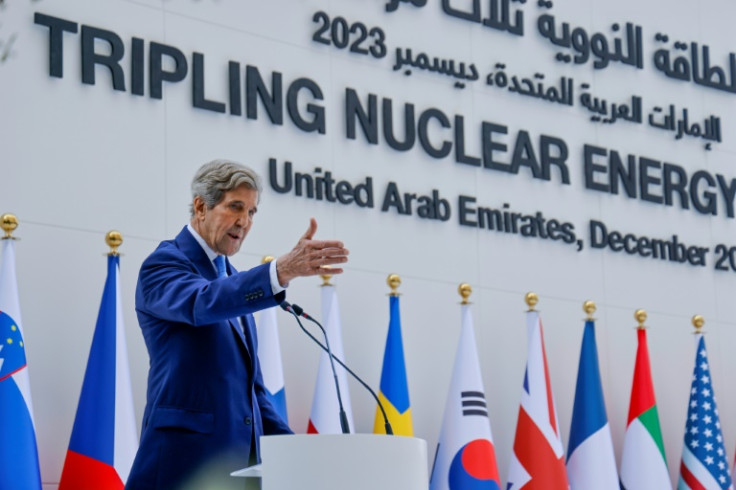
The U.S. unveiled the world's first international nuclear fusion strategy at COP28 on Tuesday, as recent technological advancements have made utility-scale fusion power a realistic possibility for the not-so-long-term future.
U.S. Special Presidential Envoy for Climate John Kerry, who is representing the United States at the international climate summit in Dubai in President Joe Biden's absence, announced a 35-country collaboration focused on harmonizing global research and development, nuclear fusion supply chains, safety standards and regulations.
"There is potential in fusion to revolutionize our world," Kerry said Tuesday.
Large-scale nuclear fusion power has been a long-standing objective for nuclear scientists seeking a cheap, accessible form of power using entirely renewable resources.
Though nuclear fusion has been theoretically possible since the 1950s, researchers were only able to generate a fusion reaction that produced more energy than it took to generate (often referred to as "cold fusion") for the first time in December 2022 at the U.S. Lawrence Livermore National Laboratory (LLNL) in California.
The lab repeated the experiment with the same positive result back in August, lending credence to the belief that the timeframe for wide-scale fusion adoption is a matter of one or two decades away.
"We are edging ever-closer to a fusion-powered reality. And at the same time, yes, significant scientific and engineering challenges exist. Careful thought and thoughtful policy is going to be critical to navigate this," Kerry said at the summit on Tuesday.
Significant hurdles remain before nuclear fusion plants can provide any meaningful amounts of energy to national grids, from plant construction and zoning laws to competition with existing power providers. And much more research is needed before utility-scale nuclear fusion can be achieved; the successful net-energy gain fusion reactions from the LLNL's experiments in December and August produced a net gain of just 0.5% of the energy required to fire the lasers used to initiate the reaction.
The exact regulatory framework for the commercialization of nuclear fusion power has yet to be finalized or released to the public. The U.S. and U.K. inked a bilateral agreement to "accelerate fusion energy development" earlier in November, as part of the countries' plans to triple global nuclear fission power capacity by 2050.
Kerry did not specify which 35 countries would join the fusion framework during his remarks on Tuesday, though experts predict it will consist of allied countries excluding China, as Chinese researchers work in parallel to develop fusion technology. Geopolitics are at play in nuclear fusion power.
"We're trying to build a global posse to get there before the Chinese so the Chinese don't dominate another new technology," Andrew Holland, chief executive officer of the Fusion Industry Association, told the Associated Press on Tuesday in response to Kerry's announcement.
Chinese researchers have been reportedly advancing their own nuclear fusion technology largely in parallel with developments in the West. While it may not take on the same scope or stakes as the Space Race of the Cold War era, the coming race for nuclear fusion technology between the U.S. and China has the potential to determine the future of global energy markets and define the renewable energy transition.







